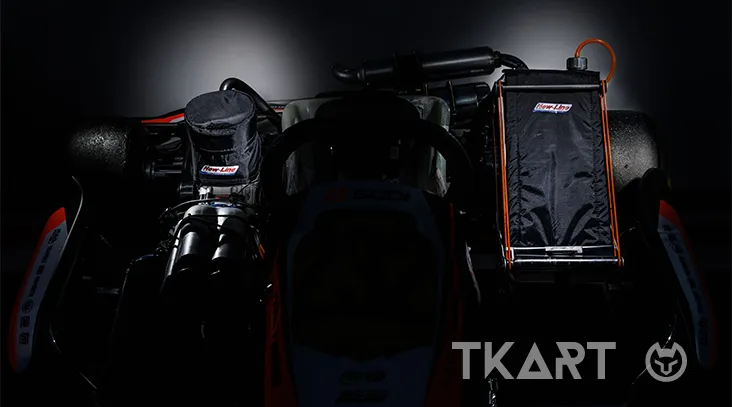ELECTRIC BLANKETS
Taking advantage of the concept of electric blankets used in various motorsport categories, including F1, the new solution introduced by New-Line Racing pre-heats the radiator and cylinder before they come into operation once on the track. As a result of thermal conduction, these two elements in turn transmit heat to the water inside them in a uniform manner, bringing it as close as possible to the temperature that the engine must have when operating in its ideal temperature range. According to the Italian company, in this way it is no longer necessary to carry out the engine warm-up on the trolley and then on the track but, on the contrary, it will be possible to race the first laps, compatibly with the grip offered by the tyres which, according to the regulations, cannot undergo this pre-heating process, already "pushing" to the maximum, without danger or risk of mechanical damage.
CYLINDER COVER
Another useful element during the winter, the cylinder cover is a sort of "shield" that protects the front part of the cylinder. Made of windproof technical fabric or even rigid material (carbon or plastic), it prevents cold air from directly hitting the engine, a process that would further slow down reaching the right temperature range necessary for the engine to avoid being damaged.
THERMOSTATIC VALVE
The thermostatic valve is a valid accessory for regulating the water temperature. It allows or stops the passage of water in the tubes of the cooling circuit. Its operation is simple: if the engine temperature is too low, the valve automatically closes and prevents the flow of water from heading towards the radiator, instead sending it back in the direction of the engine. Only when the engine has reached the correct temperature will the valve open and let the water flow through the radiator.
AIR SHIELD
Generally, the engine must operate within a temperature window ranging from approximately 48 to 52°C. During the winter months, however, thanks to the cold air, it can be difficult to reach and maintain these temperatures. In this case, the air shield mounted on the radiator is a fundamental ally for every driver because, with the possibility of sliding it vertically thanks to a system of pulleys, it progressively reduces the amount of air that invests the radiant core. In short, by always keeping the temperature level under control through the data logger positioned on the steering wheel, if present, the driver can intervene manually by raising or lowering the air shield, for example by covering the radiator in the first warm-up laps and, subsequently, uncovering it when the correct operating range has been reached. For more information you can read "Expert Advice | How to manage low temperatures with air shields".
RADIATOR
We talked about it in depth in the article "Technique | The radiator", but suffice it to say that the radiator is the main component of the liquid cooling system and ensures the stabilisation and optimisation of the engine temperature. In short, how does it work? Hot water from the engine passes through the cooling circuit tubes and enters the radiator. The outer surface of the latter is directly affected by the ambient air, which is lower than that of the water in the radiator, which cools down and is pushed back into the engine, in order to cool it, by means of a pump. This ensures the correct operating temperatures. The radiator consists of a radiant core and two tanks (to which the liquid supply and return tubes are connected). The mass includes the ribs, which connect the upper end to the lower one, and the fins (to learn more read "Technical Focus | MAX radiant core, designed for karts"). The hot water coming from the radiator enters the upper tank, travels through the spouts, connected to each other by the fins, and is cooled by the passage of fresh air by cooling the water in the channels, then reaching the lower part. Theoretically, if the size of the radiant core increases, the greater its ability to exchange heat. Usually, in the winter months, radiators with limited sizes are adopted due to low air temperatures, on the contrary during the warmer periods.
ENGINE
Each engine, in order to express its performance at its best and to work correctly, must necessarily operate within a range of temperatures. Everyone knows that exceeding the correct operating temperatures leads to overheating and consequent drops in performance and mechanical failures as well. Equally critical, however, in terms of reliability, is the opposite situation, i.e. using an engine during the winter, when the air temperature is extremely low, below the correct temperature range, in the very first metres-kilometres after entering the track, i.e. when the engine is forced to "work" starting "from cold". This is precisely why every self-respecting kart driver performs warms up the engine on the trolley (an activity now forbidden in FIA Karting races), but this involves a waste of time and materials, as well as excessive wear and tear of the internal components. This last aspect is even more critical in competitions in which the engines are powered by tuners who optimise every mechanical detail to achieve maximum performance. In this case, the various components are even more likely to wear out abnormally if they are used without respecting the operating temperatures.
 Exclusive Content
Exclusive Content



